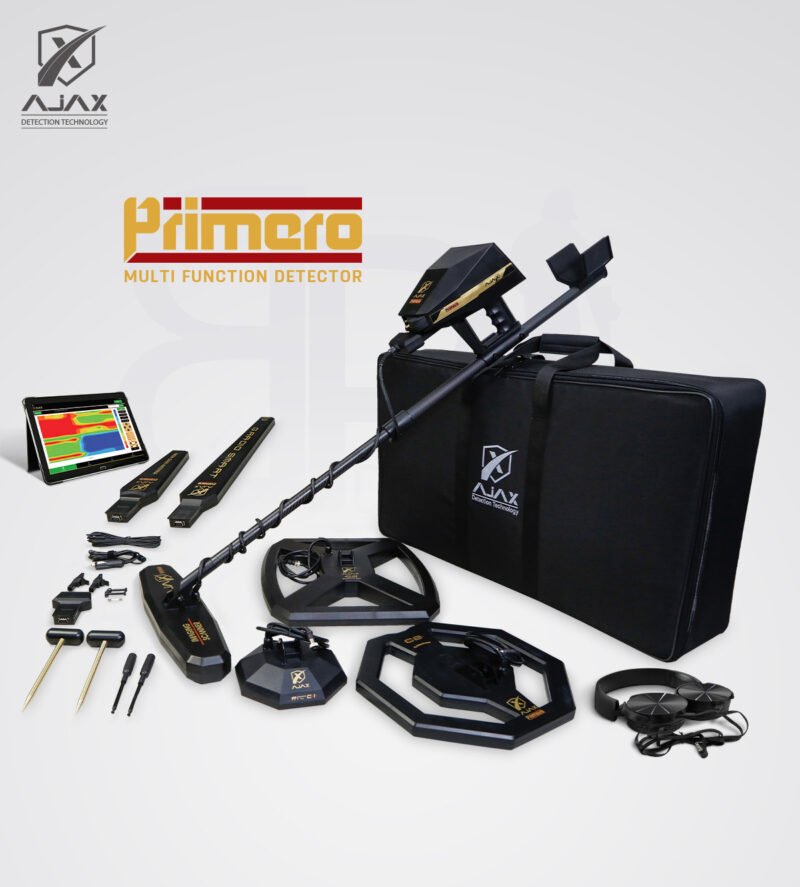For treasure hunters and prospectors, one of the most important questions when choosing a detector is simple: how deep can it go? Depth isn’t just a technical detail—it can be the difference between finding surface-level trinkets and uncovering valuable gold deposits buried far below the ground. The Ajax Primero has become a trusted name in the world of professional detection because of its ability to adapt to different environments while maintaining impressive depth accuracy.
From deserts and rocky landscapes to riverbeds and mineral-rich soils, the Primero’s reputation rests on how consistently it performs across these challenging terrains. Let’s take a closer look at what makes it so effective and why depth capability is its standout feature.
Understanding the Depth Advantage of the Ajax Primero
When comparing advanced systems, the Ajax Primero often comes up as one of the most versatile metal detectors for gold. Unlike entry-level models that struggle to distinguish signals at depth, the Primero uses multi-system detection technology that allows it to scan deeper into the earth with precision.
In favorable soil conditions, professional users report that the Primero can detect targets as deep as 50 meters with its long-range system and identify gold nuggets at depths of several meters using its specialized ground scan modes. These numbers aren’t marketing exaggerations—they’re backed by real-world testing in varying terrains, from sandy deserts in the Middle East to clay-heavy European fields.
Why Terrain Matters in Gold Detection
It’s easy to think of depth as a fixed measurement, but in reality, the ground itself is the biggest factor in how deep a detector can search. Mineralization, moisture levels, and density all play roles. For example, sandy soils offer less resistance to electromagnetic waves, which allows detectors like the Ajax Primero to penetrate deeper.
On the other hand, highly mineralized or rocky terrains can interfere with signals. The Primero combats this challenge with its ground balancing technology, which calibrates the device to “ignore” natural soil minerals while still identifying metallic signals. This adaptability is why many professionals choose it for fieldwork in diverse environments.
The Role of Multi-System Detection
The Ajax Primero isn’t just a single-mode device. It incorporates several detection systems, including long-range scanning, 3D ground imaging, ionic detection, and magnetic detection. Each system plays a role in maximizing depth across different terrains.
Long-range systems allow the user to locate large deposits or caches from a distance, while 3D ground imaging helps pinpoint the depth and shape of targets once a signal is detected. Ionic detection, meanwhile, is particularly effective in older terrains where metals have been buried for centuries, as it identifies the ionic fields produced by long-buried gold and relics.
By combining these systems, the Primero ensures treasure hunters don’t just detect signals—they understand what lies beneath before committing to excavation.
Real-World Examples of Depth Performance
Professional users often share stories of how the Ajax Primero has performed in the field. In desert regions, hunters have successfully located buried gold at depths beyond what traditional VLF detectors could manage. In mountainous terrain with mineral interference, the Primero’s ground balancing and magnetic detection systems have allowed users to filter out false signals and focus on genuine targets.
These experiences highlight an important point: depth isn’t just about how far a detector can reach—it’s about how accurately it can distinguish valuable targets from the surrounding noise. The Primero excels in this area, making it a reliable companion for serious prospectors.
Balancing Depth with Usability
Depth is critical, but so is usability. A detector that can reach 50 meters underground isn’t helpful if it’s too complicated to operate in the field. One of the Ajax Primero’s strengths is its balance of professional-level depth with an interface that remains user-friendly.
Its menu system and visual imaging feedback allow users to quickly interpret what the detector is telling them. This reduces wasted time, minimizes unnecessary digging, and ensures even those newer to advanced detectors can make the most of its depth potential.
Investment Value for Professionals
High-end detectors like the Ajax Primero represent a significant investment, but for professionals, depth performance often justifies the cost. A detector capable of identifying valuable targets several meters underground provides opportunities that cheaper, less capable devices simply cannot.
When viewed as a long-term investment, the Primero offers both advanced features and the confidence that you’re using a device designed for serious exploration. It doesn’t just help locate treasure—it saves time, energy, and reduces the frustration that comes with false positives.
Final Thoughts
So, how deep can the Ajax Primero detect gold? In favorable conditions, it can identify large targets at depths up to 50 meters and gold nuggets at several meters below the surface. More importantly, its multi-system approach ensures those depths are consistent across varied terrains, from deserts to rocky landscapes.
For professional treasure hunters and serious prospectors, the Primero represents more than just another detector. It’s a tool that adapts to the environment, distinguishes between targets, and offers the depth capability required to uncover treasures that others miss. Depth isn’t just a specification—it’s the foundation of discovery, and the Ajax Primero delivers on that promise.




